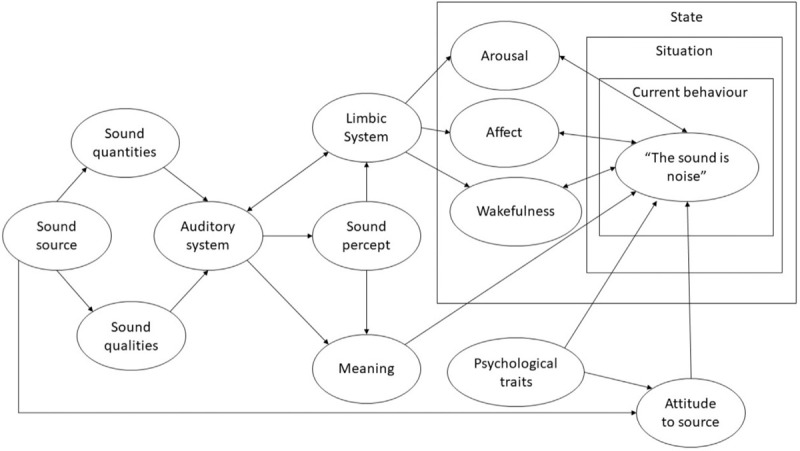Figure 5.

Process diagram of a system model of noise sensitivity. A sound has characteristics that may be detected by the auditory system. If detected, the percept of the sound is interpreted cortically for meaning, while in parallel, the information passes into the limbic system where it can contribute to physiological arousal, affect, and wakefulness. Depending upon a person’s state, situation, and what they are doing, combined with their psychological traits and their attitude to the source of the sound, they may interpret the sound as “noise.” In other words, noise sensitivity is not merely a psychological trait, but rather the result of a series of variables and processes that combine to produce it.
